Graham Reid | | 6 min read
U2: The Fly (from Achtung Baby)

Bono from U2 tells a good story. In fact Bono has a lot of good stories but this one is revealing . . . It seems that backstage at some gig in the mid Eighties Bob Dylan was playing an acoustic guitar and handed it to him. Dylan asked him to play one their songs.
Bono said he realised in that moment that they didn’t have any real “songs”. They had plenty of stadium-shaking declamatory statements and slogans -- but no real songs which would endure like Dylan’s.
It was about this time that U2 began to understand -- as the Clash had previously, so explored links with old rock’n’roll (I Fought the Law, Brand New Cadillac) and reggae -- they needed to connect to something deeper in music than just superficial crowd pleasers.
Just as metal bands like Aerosmith got their blues-rock secondhand via the Rolling Stones, U2 recognised they were of no grounded tradition and, encouraged by Dylan and others, started to explore American music traditions which were the source of rock’n’roll.
Hence the Brian Eno-produced, dark-hued The Joshua Tree album (1987) which was preoccupied with sonic space on a scale of that desert in California.
It took them to another level, but by the time the stop-gap, partially live album Rattle and Hum album/tour documentary rolled around in 1988 there was understandable cynicism about them: their quest for meaning found them linked up with the spirit of Elvis (recording in Sun Studios), gospel (Angel of Harlem about Billie Holiday), blues (with BB King) and country music.
Jeez, missed anything?
Well, umm, they also seemed keen to appropriate, or at least co-opt, the cachet of Lennon, Hendrix, Bo Diddley (as with many others, Buddy Holly not the least, they hijacked his famous riff for Desire), Dylan and much more into their orbit. It may have been sincere but it smacked of the band attempting to gatecrash a party in the pantheon of rock and inviting people to put U2 in the same illustrious company. 
That may have been partially fair -- they were selling albums by the truckload, their music was deeply touching people, they were filling stadiums and had been on the cover of Time in April '87. But coupled with Bono’s messianic poses on stage there was a fair bit of hubris at work too. They cashed in on the Beatles’ rooftop concert idea for some shallow and manipulative footage.
People like me couldn’t have hated Rattle and Hum -- or the ever-earnest Bono -- much more at this time. For a man who spoke of the liberating spirit of rock’n’roll with such passion, U2’s music seemed utterly joyless. And for a band that sang on their Lennon homage God II on Rattle and Hum, “I don’t believe in the Sixties, in the golden age of pop, you glorify the past when the future dries up” it seemed they were doing exactly that glorifying.
I’ve never been as slavishly devoted to U2 as many, and (like Bono at this epiphany period) thought of them as a band with bombast and bugger all else.
As the joke at the time went: “How many members of U2 does it take to change a light bulb?” “Just one. Bono holds the light bulb and the world revolves around him.”
But then everything changed.
After the pasting Rattle and Hum took they had to “go away and dream it all up again” (according to Bono) and see where they could take it. Oddly enough they took it to tumultuous Berlin with its dark history (where Iggy Pop and David Bowie had found their creative legs again) and, with producers Daniel Lanois and Flood, then Brian Eno, the band began a grand experiment.
They had little to lose and the clout behind them to get experimental. “I felt it was our responsibility to abuse our position,” said Bono later.
And for the resulting album Achtung Baby, they embraced electronica, alt.rock, the spirit and sensibility (if not the sound) of grunge -- and swathed it in a dark and often menacing cloak.
It was U2 at their least compromising and between lashings of distorted guitar and sonic effects, yet they also kept that contract they had made with themselves to write some real songs.
The album boasts one of their finest moments in One (covered by dozens of artists including Johnny Cash) and the stadium pleasing Mysterious Ways.
But it was the sheer intensity of the album (which placed it closer to Sonic Youth than their former selves) which impressed. What Bono had brought to the table was his discovery of Nine Inch Nails, Nitzer Ebb, the dance sounds of Happy Mondays out of Manchester, experimental music, industrial rock . . .
From the dark static of the opener Zoo Station these words emerge: “I’m ready for what’s next . . . I’m ready to let go of the steering wheel”.
What followed was a mash down of beats and electronica, balladry and brittleness, thunderous drums and Edge’s guitar carving across like an electric saw.
U2 had reinvented themselves as cutting edge rather than the sum of their influences, and yet they managed to create music which could be haunting (Even Better Than The Real Thing) and referenced themselves (Who’s Gonna Ride Your Wild Horses is an archetypal U2 stadium ballad buried in swathes of noise).
Achtung Baby is, even now, an exceptional album
Quite what they would do after it would be the issue: this was a band which had always followed up an innovative album with a retreat.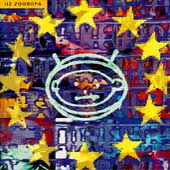
Yet an extraordinary thing happened: the experiment continued with Zooropa (1993) which began life as an EP but grew to become, in the words of Rolling Stone reviewer Anthony DeCurtis “a daring, imaginative coda to Achtung Baby, U2’s first unqualified masterpiece.”
On the title track Bono sings “Uncertainty can be a guiding light” and the album is riddled with doubts, shadow, a sense of sliding into an abyss of politics and technology, of a world falling apart.
The album’s oddest hit was the Edge’s drone speak-sing Numb: “Don’t move, don’t talk, don’t think . . .”
And it closes with the voice of Johnny Cash as Old Testament prophet lost in the modern world and searching for the eternal verities.
Zooropa is a compelling argument that U2 were not only on top of their game but also creating new parameters: they were a mainstream band that were more experimental than any of the more bannered “alternative rock” bands like Soundgarden or Nirvana.
In fact Zooropa (deservedly) won the Grammy for best alternative album and in his acceptance speech Bono said, “I’d like to give this message to the young people of America. And that is: we shall continue to abuse our position and fuck up the mainstream.” 
As a double whammy Achtung Baby/Zooropa is hard to top -- but U2 extended the concept into the astonishing Zoo TV tour (see also the clip below) which redefined the potential of stadium rock as deliberately garish theatre -- and fun.
For these few years of the early Nineties U2 used their power to do something daring and different. But few bands can remain in the vanguard by taking such risks, and they slowly ceased to fuck up the mainstream.
The inevitable retreat came: the Pop album (1997) marked a disappointing coda to their trilogy of experimentation.
(Some likened Pop to Bowie’s Lodger which appeared after Low and Heroes in the late Seventies from his Berlin period, but that diminished Lodger).
The PopMart tour was nowhere near the disaster that many made it out to be, but amidst the techno-trickery the old pomposity and bombast returned, and they heavily favoured the stadium-shaking favourites of the pre-Achtung Baby period.
And that’s where U2 appears to be once more: albums like All That You Can’t Leave Behind (2000) and How to Dismantle an Atomic Bomb (2004) are likable enough, but (with a few exceptions on song like Vertigo) they are disappointing retreats to a more recognisable U2 for public consumption. Their recent stadium shows are still powerfully impressive, but lack that frisson of the unexpected which Zoo TV provided.
Their concert film in 3D was more remarkable for the innovative technology than their music which was again very clearly grounded back in the familiar.
But at the dawn of the Nineties it was possible to forgive U2 their former bluster and swagger and hear them recreate themselves as a band which, if we can get a bit Catholic here, had been given the papacy and thought, "let’s enjoy it".
These Essential Elsewhere pages deliberately point to albums which you might not have thought of, or have even heard . . .
But they might just open a door into a new kind of music, or an artist you didn't know of.
Or someone you may have thought was just plain boring.
But here is the way into a new/interesting/different music . . .
Jump in.
The deep end won't be out of your depth . . .



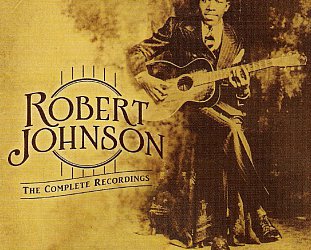
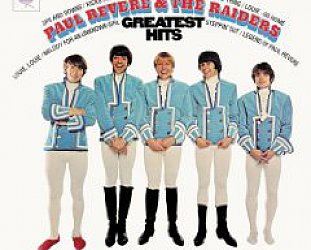
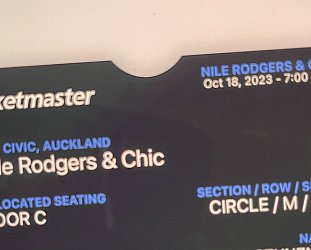
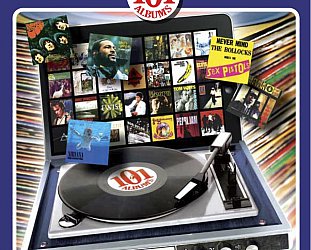
nathan graves - Feb 6, 2009
This was my first major campaign for the Island label and PolyGram. The Zooropa album arrived and boy did it create some fun. Secret listening sessions and trips in the car to blast it to media..Putting up massive displays in record shops and adding new items to the window everyday, street posters all over Auckland with obscure pictures and 'space helmet' images in B&W and then a trip to Melbourne with journolists to show off the Zoo TV tour and meet the band. Heady and fun days. Then they came to Auckland after much discussion about economics. NZ was excited to have them back. The chat ( very quick it was) with Bono and Adam Clayton was memorable since they had never forgotten that NZ was the first country to chart ' I Will Follow' at number 1 and also had kept ' One Tree Hill' in the charts for a record 10 weeks or more. I will not forget that Adam knew that NZ also had charted Joy Division's ' Atmosphere' for 6 weeks running at the number one slot and he thought this was a sign that we all had great taste !!!
SaveGraham, you do a great job and are a music man through and through. keep up the posts and the travel...they are a pleasure to read, see and hear... Nx
Gavin Hancock - May 19, 2011
One last big flash in the pan before they started to lose the plot! If you're going to start fading away you may as well leave something to be remembered by other than just The Joshua Tree!
Savepost a comment